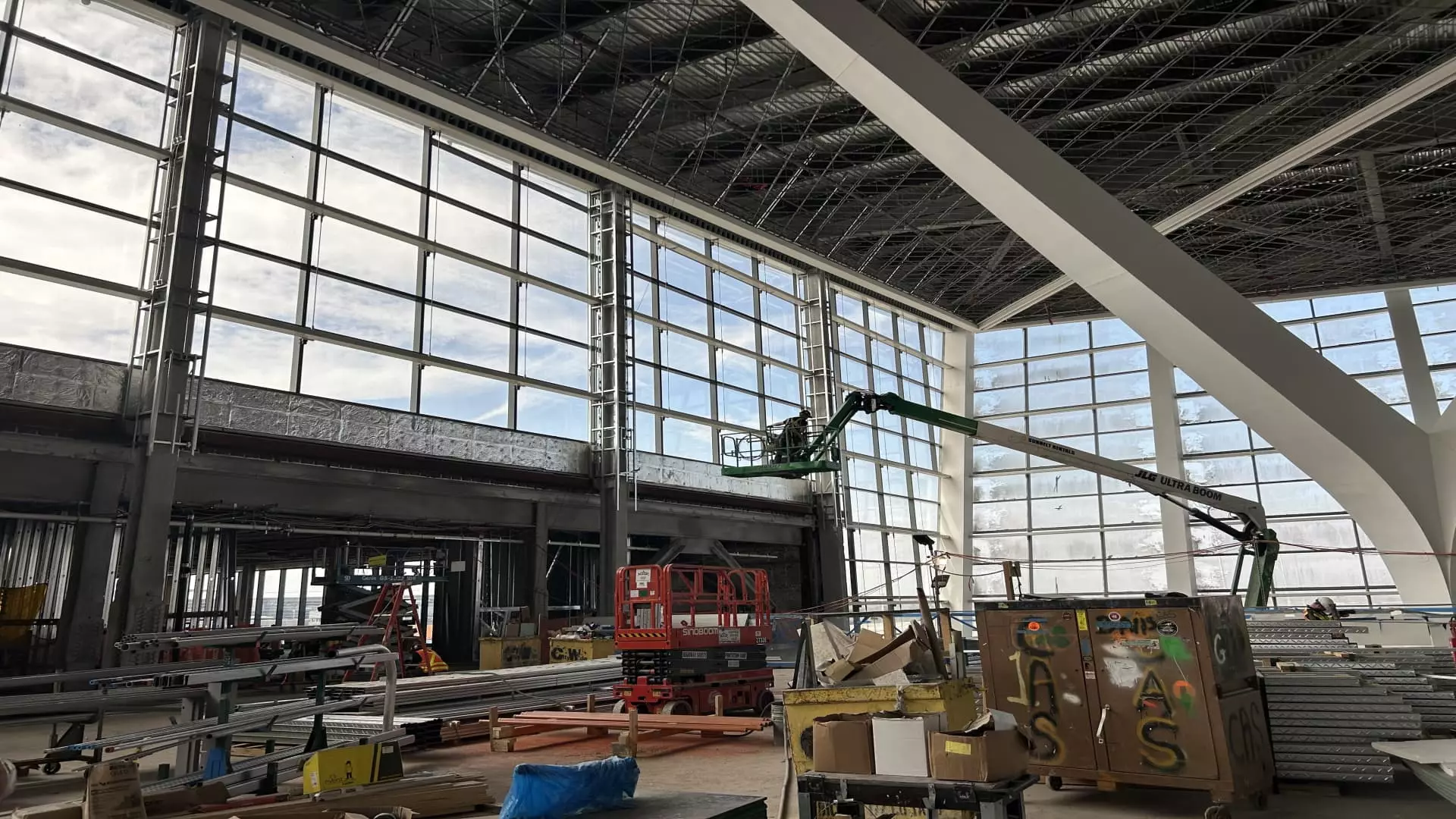The ongoing transformation of JFK’s Terminal 1, with a staggering price tag of $9.5 billion, epitomizes the contradictions of modern infrastructural boondoggles. While the project is presented as a visionary upgrade, it raises questions about the real return on such an immense expenditure. Is this truly a necessary evolution for New York’s aging aviation hub, or simply an extravagant display of capital that focuses more on image than function?
From the outset, the emphasis on creating a terminal “flooded with light” and mirroring a butterfly’s form suggests design over practicality. Such aesthetic ambitions, while compelling on paper, risk overshadowing the core purpose of airports: efficient, safe, and accessible travel. The focus on lofty architectural motifs—slanted glass walls and sweeping curves—might impress visitors but can also lead to underwhelming operational complexities and inflated costs. It’s not enough to have a pretty terminal; travelers demand reliability, speed, and comfort, which can often be compromised when form takes precedence over function.
Economic and Social Implications of Ballooning Costs
The announcement that JFK’s new terminal could eventually cost upwards of $19 billion for the entire overhaul underlines an alarming trend: the willingness of public and private interests to pour enormous sums into airport upgrades while other vital infrastructure sectors suffer neglect. This investment, justified by claims of fostering global competitiveness and accommodating rising passenger numbers, often lacks accountability, especially when the project’s leadership seems more concerned with prestige than prudence.
In a broader context, the colossal budget reflects a misguided belief that bigger and more luxurious airports equate to superior service. This mindset ignores the lessons learned from LaGuardia’s own $8 billion refresh, which still struggles with congestion and delays. Beyond dollars, such projects risk exacerbating inequalities; a wealthy few may enjoy the spectacle of a sprawling, opulent terminal, while the average traveler continues to face long security lines, inconsistent service, and aging infrastructure elsewhere in the system.
Distraction from Real Infrastructure Needs
While the hype around JFK’s newest terminal paints a picture of a world-class gateway, the reality reveals a disconnect between the project’s promise and pressing national needs. U.S. airports are desperate for upgrades—an estimated $173.9 billion is projected to be necessary through 2029. Yet, the focus on what is essentially a luxury development sidesteps critical issues: outdated technology, inadequate transportation links, and insufficient capacity.
The fact that half the airlines at JFK are moving terminals within the next few years illustrates a systemic churn, often caused by neglect of foundational infrastructure. Instead of investing in smarter, more resilient systems—such as modern baggage handling, real-time security analytics, or sustainable energy solutions—the emphasis has been on visual spectacle. The consequence is a two-tiered system where the elite airports serve high-paying international travelers, while domestic and regional airports continue contending with crumbling facilities and strained resources.
The Illusion of Future-Ready Infrastructure
The project narrative promises a “future-proof” terminal, but the truth is more sobering. The initial phase, opening around the 2026 World Cup, will inaugurate a sleek, light-filled space capable of handling 14 million passengers annually, a figure that may seem impressive but remains a drop in the bucket compared to the soaring demand. Moreover, the emphasis on wide-body aircraft gates signifies a reliance on long-haul international flights that may not translate into broad benefits for regional or domestic travelers.
More troubling is the assumption that such an expansive project will remain adaptable. Rapid technological changes—autonomous vehicles, artificial intelligence in security, sustainable energy solutions—might make many aspects of this lavishly designed terminal obsolete within a decade. The real measure of success should be how well the infrastructure can evolve, not how stunning it looks at the initial unveiling.
A Political and Cultural Reflection
Ultimately, JFK’s billion-dollar investment reflects a political choice—prioritizing global prestige and economic symbolism over pragmatic infrastructure reform. It’s a gamble that continues to feed into New York City’s narrative of being a world hub, but not necessarily a better place to travel from or through. The decision to focus on luxury retail, duty-free shopping, and aesthetic grandeur signifies a perception that international travelers, often high-income, are the primary demographic. This leaves behind the domestic traveler, who is often at the mercy of a system still grappling with congestion, delays, and service inconsistencies.
The optimism about setting a new standard for excellence is commendable, but in practice, it risks becoming a hollow showcase. Without tangible improvements in operational efficiency and a genuine focus on passenger experience beyond visual appeal, the project may serve more as a monument to bureaucratic excess than as a milestone in transportation infrastructure. If history is any guide, the real challenge will be translating architectural beauty into everyday efficiency and accessibility—a promise that has often fallen short in large-scale public projects.

